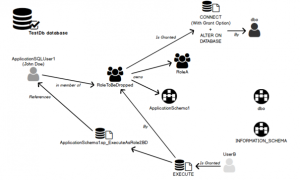
In the world of database administration and security, Database Role Membership is a crucial concept that determines what a user can and cannot do within a database. Managing roles properly ensures not only effective access control but also minimizes security risks in your SQL Server environment. This article explores what database roles are, the importance of role membership, how to manage it, and best practices to follow — all tailored for optimal SEO performance and clarity.
What is a Database Role?
In SQL Server and other relational database management systems (RDBMS), a role is a collection of permissions that can be assigned to users or groups. Rather than assigning permissions to each user individually — which is inefficient and error-prone — administrators assign permissions to roles, and then add users to those roles. This model simplifies security management and improves scalability.
There are two types of roles in SQL Server:
- Fixed Database Roles
- User-Defined Database Roles
Fixed Database Roles
SQL Server includes several predefined, or “fixed”, database roles with specific permissions. Some of the most commonly used fixed roles include:
- db_owner: Full access to the database.
- db_datareader: Can read all data from all user tables.
- db_datawriter: Can add, delete, or change data in all user tables.
- db_ddladmin: Can execute DDL commands (e.g., CREATE, ALTER, DROP).
- db_securityadmin: Manages roles and permissions.
- db_backupoperator: Can back up the database.
- db_denydatareader: Cannot read any data.
- db_denydatawriter: Cannot change any data.
User-Defined Roles
In addition to fixed roles, database administrators can create user-defined roles tailored to specific application needs or business rules. For example, you might create a role called sales_team with permissions only to view sales reports and enter sales data.
What is Database Role Membership?
Database Role Membership refers to the relationship between database users and roles. When a user is added to a role, they inherit all permissions granted to that role. This means that role membership directly determines what actions a user can perform within the database.
Understanding this relationship is essential for managing access rights securely and efficiently. It helps ensure that users have only the permissions they need to perform their jobs — a core principle known as least privilege access.
How to Check Database Role Membership in SQL Server
To determine what roles a specific user belongs to, SQL Server provides several methods. One of the most common is using the system stored procedure:
EXEC sp_helpuser 'username';
Alternatively, the following query provides similar information:
SELECT
dp1.name AS DatabaseRoleName,
dp2.name AS MemberName
FROM
sys.database_role_members drm
INNER JOIN
sys.database_principals dp1 ON drm.role_principal_id = dp1.principal_id
INNER JOIN
sys.database_principals dp2 ON drm.member_principal_id = dp2.principal_id
ORDER BY
dp1.name, dp2.name;
This query shows all current database role memberships in your SQL Server database.
How to Add or Remove a User from a Role
Managing role membership is straightforward using sp_addrolemember and sp_droprolemember, though Microsoft recommends using ALTER ROLE in newer versions of SQL Server.
Add a User to a Role
ALTER ROLE db_datareader ADD MEMBER johndoe;
Remove a User from a Role
ALTER ROLE db_datareader DROP MEMBER johndoe;
These commands are preferable because they align with current SQL Server syntax standards.
Why is Database Role Membership Important?
1. Security
Database roles are foundational to database security. By carefully managing who is a member of which role, you reduce the risk of unauthorized access or data breaches. Incorrect role assignments can expose sensitive data or allow unauthorized operations like deleting tables or dropping databases.
2. Simplicity
Role membership simplifies permission management. Instead of managing permissions for each user individually, roles act as a central point of control. This approach is especially valuable in larger teams or enterprise environments.
3. Compliance
Many industries — such as healthcare, finance, and e-commerce — require strict data access controls for compliance with regulations like HIPAA, GDPR, or PCI-DSS. Managing database role membership effectively ensures you meet these compliance standards.
4. Scalability
When your team grows, assigning roles becomes far more efficient than managing individual permissions. Add the new user to the appropriate role, and they instantly gain the required access.
Best Practices for Managing Role Membership
To maintain a secure and efficient database environment, follow these best practices:
Use the Principle of Least Privilege
Only assign users to roles that grant the minimum permissions necessary for their tasks. Avoid placing users in high-privilege roles like db_owner unless absolutely required.
Regularly Audit Role Membership
Conduct periodic audits of database role membership using SQL scripts or security auditing tools. Remove users who no longer need access or whose roles have changed.
Use Descriptive Role Names
When creating user-defined roles, use clear and descriptive names like report_viewers or inventory_admin. This makes it easier to understand the role’s purpose.
Avoid Overlapping Permissions
Avoid adding users to multiple roles with conflicting or redundant permissions. This can lead to confusion and potential security loopholes.
Document Changes
Always document role changes, especially in production environments. This practice ensures accountability and helps during troubleshooting or audits.
Common Mistakes in Managing Database Role Membership
- Assigning db_owner too freely: This grants full control and is often unnecessary.
- Not updating memberships after employee changes: Former employees or contractors may retain access if not properly removed.
- Using user-specific permissions over roles: This complicates access management and is error-prone.
- Neglecting role membership in dev/test environments: Always mirror production role assignments in staging or test environments to ensure consistency.
Conclusion
Database Role Membership is a powerful and essential feature for managing access control in SQL Server and other relational databases. By understanding the types of roles, how to assign users to roles, and following best practices, you can secure your data, streamline management, and support compliance requirements.
Proper role management isn’t just about convenience — it’s a critical component of your overall database security strategy. Whether you are a database administrator, developer, or IT manager, understanding role membership and using it effectively will help ensure that your systems remain secure, efficient, and scalable.